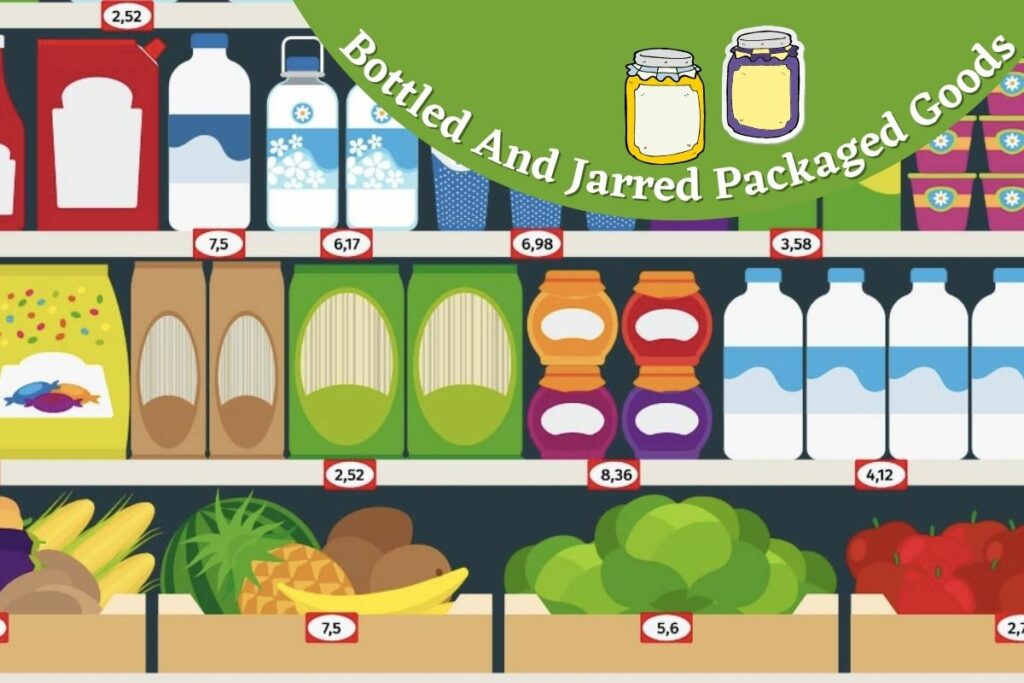The history of packaged goods is extensive. Ancient Egyptians used glass vessels long before us. Bottle-making technology hasn’t changed much. The bottle-making machine was invented in 1900, paving the way for mass-produced bottled and canned items. Glass is also used for household chemicals.
Since the situation has changed, glass jars and bottles now compete with cardboard bags and plastic bottles. Despite the competition, bottled containers remain popular in the packaging industry. Product packaging has long been chosen by food and medical product manufacturers. What do buyers like about it?
Food packaging comes in a wide variety of shapes and sizes. To protect food, packaging styles vary depending on the product being packed. Historically, packaging has served this purpose, but it has changed to serve both producers and consumers. Various goods are packaged in cans, glass jars, plastic bottles, and foil pouches Health, convenience at home or on the go, recycling, and disposal are all factors that affect food packaging.
Premade doughnuts, pies, pickles, and jams are available in bottles and jars, eliminating the need to create them yourself. Packaged goods, like other convenience goods, carry hidden dangers. You can pick which packaged things are worth the money and which pose substantial health concerns provided you have the knowledge and awareness.
These commodities are offered in plastic or glass bottles. Packaged items are sold in containers like glass jars, cans, plastic tubs, or cartons. They come in boxes and pouches as well. Meat, vegetables, fish, and shellfish are examples of fresh foods. Shampoo, toothpaste, cleaning materials, gardening supplies, and pet food are examples of non-food.
Instead of drinking tap water, which may contain chemicals or bacteria, many busy consumers resort to bottled water. A healthy alternative to cans is available in many packaged foods. Reusable or recyclable, glass jars do not contain chemicals that might contaminate food.
Most processed foods are safe to eat. Some require particular handling and storage to avoid bacterial contamination. Fruits in packages should be eaten quickly to avoid spoiling. Some packaged meals require reheating. Grocery stores appear to provide a large variety of packaged goods. One advantage of processed goods is their long shelf life, making them cheaper and more convenient.
On the opposite end of the scale are high-priced boutique items made with natural preservatives and local ingredients. Convenience without sacrificing taste. To help clients understand the benefits of bottled and jarred goods, we have compiled a list of the top reasons why they are useful.
Read More: California Prohibits “Forever Chemicals” From Children’s Products, Food Packaging
Advantages Of Bottled and Jarred Packaged Goods
These foods can be consumed anytime. They are also lightweight and portable. They don’t need to be packed or stored. Food that is packaged is better since it is shielded from environmental and physical damage. Glass containers extend product life. Last but not least, the convenience factor. They also save us time and effort while shopping, preparing, and cooking.
Duration
One of the greatest benefits of bottled or jarred foods is that they may be stored for longer periods of time. Plastic, for example, can assist you to alter the air, preventing discoloration, and extending the item’s life. Many firms employ this method because metal containers keep items fresher longer.
Hygiene
Food packaging helps carry and store food safely. Packaging reduces exposure to airborne contaminants and bacteria that cause diseases like food poisoning. Using recycled material for food packaging poses challenges. Regulatory organizations ensure that businesses that employ recycled materials are clean and safe. Packaging also helps keep food hygienic at home by preventing it from being left out in the open.
Disadvantages
After discussing the benefits, let us consider the drawbacks. Food packaging causes a lot of waste. It has generated a lot of rubbish. Because firms must pay a lot more money to package their goods, the cost is raised, so these things are pricey. The harmful influence of packaged meals on one’s health is one of the most significant drawbacks. A lot of these items include food chemicals and artificial flavors, which may be detrimental to human consumption, as well as reduce or aggravate taste.
Price
Using these packing items raises the basic cost, which is one of the main downsides. Using this type of packaging raises the cost of items by around 20% to 50%, depending on the packaging used. It also relies on the consumer’s taste. If the meal isn’t tasty, the consumer won’t notice the lovely packaging. The material is heavy without glass.
This makes emptying and manually loading things in glass containers more challenging than in traditional packing. Glass is sensitive packing material. Bottled items are more expensive. Quality standards are usually specified by manufacturers. A low incidence of breakage and substandard items in production is crucial to maintaining the excellent quality of glass containers. Increasing requirements boost expenses, which raises the final product’s price.
Read More: Starbucks Employees Will Decide On Corporation At 3 Buffalo Stores.
Environment
Consumer packaging, according to Duke University professors Patrick Reaves and Michael Nolan, accounts for 20% of all landfill plastic and paper waste. Removing food packaging harms the ecology by reintroducing waste. Most trash is poisonous. Plastic, for example, includes carcinogens and reproductive toxins. Notably, non-biodegradable packaging endangers human and animal life, notably marine life.
Conclusion
A bottled or jarred food is one that has been prepared, canned, or sealed airtight. Microorganisms that flourish in moist, warm settings cause food spoilage. After the microorganism stage, the food is safe to eat, although the taste may be affected.
Bottled goods are sterile products that have been treated to kill bacteria. Jarred goods are also commercially sterile, but do not require processing or cooking. Some frequent preservatives in bottled and jarred foods include sugar, nitrates, mineral salts, acids, and sulphates or gluconate.
Read More: Parsley App Launches In Austin

